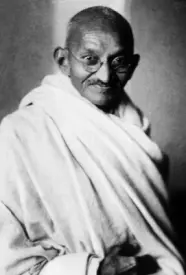The International Day of Nonviolence is marked every year on October 2, the birth anniversary of Mahatma Gandhi, one of the prominent faces of the Indian freedom struggle and the pioneer of the nonviolent philosophy and approach. As we mark the International Day of Non-violence, proposed by the United Nations in 2007, we remember the Indian freedom fighter born as Mohandas Karamchand Gandhi. The International Day of Non-Violence honours how Gandhi’s practise and legacy has influenced global, non-violent protests.
Gandhi popularised the renowned Sanskrit adage ‘Ahimsa Paramo Dharma,’ which loosely translates to ‘non-violence is the highest moral value.’
The International Day of Nonviolence was first commemorated in 2007, when the United Nations General Assembly approved a resolution on June 15, 2007, declaring that this day provides an opportunity to “disseminate the message of nonviolence, particularly via education and public awareness.”
International Day of Non-Violence: History
International Day of Non-Violence was first observed in 2007 when the UN General Assembly passed a resolution and stated that this day is an occasion to ‘disseminate the message of non-violence, including through education and public awareness. The resolution was passed with a goal to secure a culture of peace, tolerance and understanding with the help of the teachings of India’s global icon who inspired millions to adopt the path of non-violence.
It was in January 2004 when the Iranian Noble Laureate Shirin Ebadi had proposed the idea of the International Day of Non-Violence. The idea attracted the attention of many Congress leaders and they called upon the UN in 2007 to adopt it.
The then India’s Minister of State for External Affairs, Mr. Anand Sharma introduced the resolution in the General Assembly on behalf of 140 co-sponsors. Sharma said that wide and diversified sponsorship of the resolution was an acknowledgement of the universal respect for the Mahatma and his philosophy.
Secular Definition of Non-violence
The principle of non-violence — also known as non-violent resistance — rejects the use of physical violence in order to achieve social or political change. Often described as “the politics of ordinary people”, this form of social struggle has been adopted by mass populations all over the world in campaigns for social justice.
Professor Gene Sharp, a leading scholar on non-violent resistance, uses the following definition in his publication, The Politics of Non-violent Action:
“Non-violent action is a technique by which people who reject passivity and submission, and who see struggle as essential, can wage their conflict without violence. Non-violent action is not an attempt to avoid or ignore conflict. It is one response to the problem of how to act effectively in politics, especially how to wield powers effectively.”
While non-violence is frequently used as a synonym for pacifism, since the mid-twentieth century the term non-violence has been adopted by many movements for social change which do not focus on opposition to war.
One key tenet of the theory of non-violence is that the power of rulers depends on the consent of the population, and non-violence therefore seeks to undermine such power through withdrawal of the consent and cooperation of the populace.
There are three main categories of non-violence action:
- protest and persuasion, including marches and vigils;
- non-cooperation; and
- non-violent intervention, such as blockades and occupations.
Non Violence as a fundamental Human Value
There are five human values which are inherent within every person, and are the foundations of the ethics of world religions: Truth, Love, Peace, Right Conduct (or righteousness) and Non-violence. These values reside within the human person, and can be elicited via education and values clarification. The basic strophe on values (which can be observed) is,
Behaviour reveals choices. Choices are based on values. Values are guides to action.
Gandhi spoke – and acted out – a principle by name satyagraha. This is composed of two words, sathya (meaning truth) and graha (meaning that which is grasped). So the action based on satyagraha – is a grasping of the truth, in thought, words and action. This is the adhara, the foundation of human integrity, what is called trikarana suddhi, purity of thoughts, words and action.
Non-violence as a human value is shown by compassion, consideration for others, harmlessness, helpfulness, awareness of responsibility for citizenship, and Justice.
Other actions – and attitudes – which reveal Non-violence are – among others – appreciation of other cultures and religions, Brotherhood / Sisterhood, Care of the Environment, Equality, love and service of one’s Motherland, perseverance and respect for property.
What God loves more are the flowers blossoming on the tree of man’s own life, fed and fostered by his own skill and sincerity. They are the flowers of his virtues grown in the garden of his heart. Of these, the virtue of non-violence, is the very first. This involves much more than abstention from harming living beings. One should desist from causing pain to any living being, not only by deeds, but even by words and thoughts. One should not entertain any idea of hurting another, or humiliating another.
![]()



